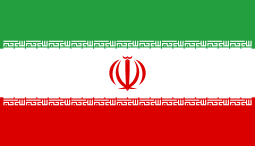


Salman Farsi – The animated film “Salman Farsi” was produced by Ruhollah Baradari and licensed by the Licensing Council of the General Directorate of Cinema, Audio and Visual Assessment of the Ministry of Culture and Islamic Guidance.
This animation, which will be made with a 2D technique and directed by Mohammad Reza Najafi Emami, will deal with phrases from the life of one of the companions of the Prophet of Islam (PBUH), Salman Farsi.
Salman’s childhood and adolescence with the Iranian name “Roozbeh” in one of the functions of the land of Persia, his migration to Mecca upon hearing the news that Prophet Mohammad (PBUH) was sent as a prophet, Salman chose the name for him by the Prophet after his conversion to Islam from One of the important parts of this movie is animation.
Also, in other chapters of this animation, the valuable services that he has rendered along with the Prophet in promoting and spreading the religion of Islam are discussed, and his effective participation in many battles, such as the trench warfare, is one of the stories narrated in this cinematic narrative. It becomes.
The cinematic animation “Salman Farsi” will participate in the 25th Hamedan Children and Adolescent Film Festival if the production process is completed.
The animation “Roozbeh Epic” about the life of Salman Farsi before he reached the Prophet of Islam (PBUH) is directed and produced by Ali Nouri Oskooi at the Ishraq Cinema Institute.
Oskooi said about this animation: Salman Farsi is a film project related to the pre-Islamic era of Salman’s life; That is, until Salman sees the Prophet (PBUH).
“The story of his life is viewed from the angle that we see Salman as one of the first waiters for the emergence of Islam.”
Before the Prophet (pbuh) was sent as a prophet, Hazrat Salman began his journey to reach the Prophet and the truth of religion.
“In the story of the film, we see a barber who, as a Zoroastrian in the society of that day in Iran, is waiting for a person who is a kind of savior of confused minds who are looking for the truth,” Oskooi said about the apocalyptic view of this work. Hearing that this person will come and he is the Promised Prophet, he starts his journey and searches for the truth for many years, and finally reaches the Holy Prophet (PBUH).
He added: The discussion of waiting can be seen in the life part of Hazrat Salman. The waiting period of Hazrat Salman to reach the Holy Prophet (PBUH) has significant similarities to the waiting period in the current period. Also, the confusion and turmoil in the society of that time is similar to the situation today. That is, society needs to be organized to achieve comprehensive unity around a promise.
The director of this film continued: Salman’s movement and recognizing the correct direction of this movement in that space is one of the points that must be paid attention to.
He explained about the region shown in this work: Approximately 70% of the film is in Iran and the Christian part of Iran, and then goes to regions that were closely related to the Iranians. Like Mosul, which had a cultural closeness with the Iranians. Zoroastrianism and Christianity of that time are also shown in this film. Less than 15% of the work is locally located in the Arabian Peninsula. Because the film ends with the arrival of Hazrat Salman to the Prophet of Islam (PBUH) who enters Yathrib in the last sequence.
Currently, the initial stages of the work include research and writing the script and production license, and are in the pre-production stages.